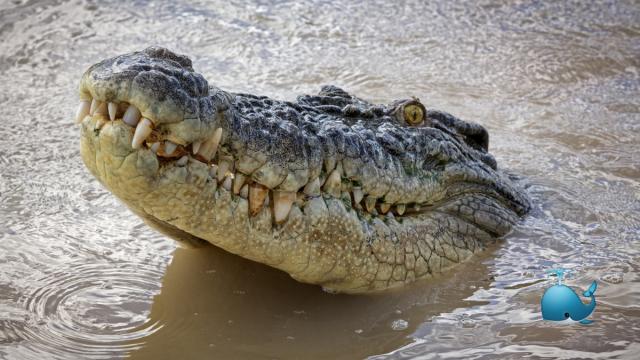Videos of Australia’s crocodiles and humans encountering one another are never light fodder, but few are more horrifying than this recent footage from Far North Queensland.
The 13-second video, posted by 7News, shows a speedy saltwater crocodile swimming alongside a crabber’s boat.
Perhaps speedy is an understatement. The living dinosaur was racing through the water so fast, it both maintained pace with the boat and breached the water like it was some sort of human-eating dolphin or whale.
Amazing video has emerged of a monster croc racing a boat in Far North Queensland. Alec Dunn was heading out to check his crab pots when the reptile popped up in the water beside him. https://t.co/8ftPfFYTVQ #7NEWS pic.twitter.com/Oq8injdEaJ
— 7NEWS Adelaide (@7NewsAdelaide) September 9, 2020
The footage certainly does little to reassure any city folk or eager southern tourists that visiting croc country is a carefree time.
Interestingly, an expert explains it’s not usual behaviour for the ancient Australian creatures.
The crocodile who tried to be a whale
The video is only short but it shows the crocodile breach the surface two times as it flies through the water.
Daniel Rumsey, Australian Reptile Park’s Head of Reptiles, explained the crocodile’s behavior wasn’t typical and it was likely just startled by the boat.
“Crocs don’t usually breach when they’re moving fast like in the video. When they’re in predatory mode, they swim below the surface, barely making a ripple on the water. When they do come to the surface, they’re coming up for air,” Rumsey said to Gizmodo Australia in an email.
“The croc in the video breaking the water’s surface could just be because of the speed that it’s moving. It could even be moving over a log underwater.”
[related_content first=”1066015″]
The apparent breaching wasn’t the only thing to raise eyebrows — it was also the sheer speed of its swim. Adult saltwater crocodiles can achieve swimming speeds of up to 20 kilometres per hour in short bursts, Rumsey explained.
While the video makes it seem like the crocodile is racing the boat to the ends of the Earth, it’s likely it would have stopped bothering as soon as the footage finishes.
“They are ambush predators and cannot sustain swimming at a fast speed for a long time,” Rumsey said.
The size of the croc also plays a part in its speed. Rumsey said he estimates the crocodile is about four metres long, or around 13 feet, meaning it could hit those top speeds fairly easily compared to smaller ones.
“When you’re talking about larger crocs — 10-to-11-foot — they would have more power and be able to move faster than a four-to-six-foot croc,” Rumsey said.
But once it gets into that five-metre, or 16-foot range, Rumsey added, it becomes a little less agile.
“A really big croc — up to 16-foot — would move slower than a 10-foot individual. That being said, small crocs can also move really fast,” Rumsey said.
Maybe all this does little to quell your crocodile fears but it’s a good idea to remember these videos are about perspective. The boat was likely going a maximum of 10 knots, equivalent to around 20 kilometres per hour. That’s right in the sweet spot for a crocodile’s maximum speed. With the video lasting only 13 seconds, it’s likely to have lost its fizz immediately after.
So, as long as you can maintain that speed for at least 20 seconds, you’ll be right.
[related_content first=”1167064″]
